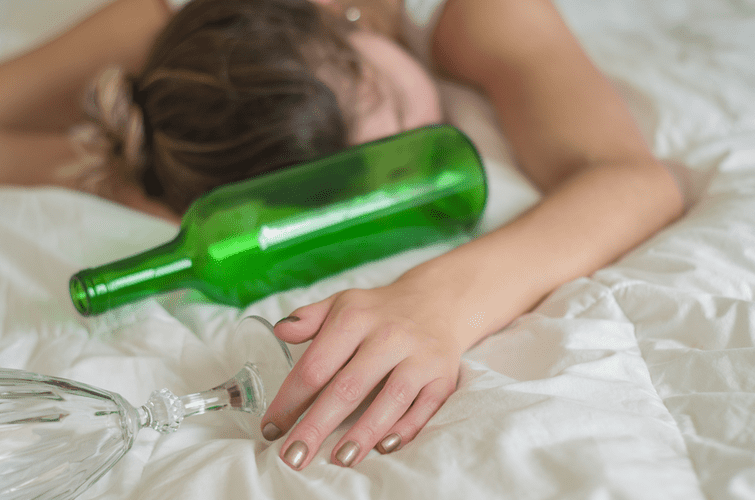Contents
That is why, here at Launch Centers, we are dedicated to your overall health and well-being, as well as supporting you in your pursuit of recovery. Though the benefits can vary widely from person to person, taking a month-long break from alcohol can do your body good. This article takes a detailed look at red wine and its health effects. Moderate amounts are very healthy, but too much can have devastating effects. Mixing alcohol with these unknown drugs means you might have an unexpected reaction.
That is why it is extremely important to seek help immediately if you or a loved one is struggling with any substance addiction. At Asheville Recovery Center, treatment specialists have developed a unique, hybrid model of treatment which combines a traditional 12-step program with holistic rehabilitation. A multitude of services, programs, and therapies are offered, most common house rules in sober livings including the Partial Hospitalization Program, Residential-style treatment, outpatient rehabilitation, and more. Mixing ecstasy and alcohol can contribute to serious health complications, including dehydration and organ damage. A 2002 study in the Journal of Pharmacology and Experimental Therapeutics analyzed the interactions between MDMA and alcohol.
Journal of Addiction Research and Therapy, alcohol is the most common substance abused in combination with MDMA. As alcohol works as a CNS depressant, MDMA is working as a psychoactive substance, leading to adverse physical and psychological effects on the user. MDMA effectively reduces the intoxicating effects of alcohol, commonly leading the individual to believe that they can over-indulge in drinking. While alcohol is typically metabolized more rapidly, drinking excessively can lead to liver toxicity or alcohol poisoning. Counseling of any kind should be incorporated into treatment for molly and alcohol polysubstance abuse. Additionally, adding holistic treatment options such as art therapy, acupuncture, yoga, and mediation will help address the individual as a whole.
In other cases, the combination of drugs creates a completely different kind of high or a stronger one. Another common scenario is using one substance to offset the negative side effects of another substance, while still getting the desired high. Substance addiction forms when a person becomes both mentally and physically dependent on a type of drug or alcohol. The body gets accustomed to functioning under the effects of the substance, causing severe withdrawals when that substance is taken away or no longer being used regularly. If people are seeking treatment for drug or alcohol use disorders, a research-backed program of therapy can help with long-term recovery. Overall coherence was relatively low, indicating that participants were following the lead car less well, which may have disturbed the measurement of car following.
Why are Molly and Alcohol A Dangerous Combination?
This is in line with Brookhuis et al. , who also reported no significant effects of drug conditions on car following. After there was no medical objection for participation, participants were invited to come in for a training day to alcohol allergy & alcohol intolerance check for simulator sickness and to practise all of the driving scenarios in a full dress rehearsal. After the training day, participants visited the facilities four additional times , with a washout period of 1 week in between.
The risk of alcohol poisoning increases with MDMA use, because people drink more to avoid MDMA withdrawal. One study found prenatal exposure to MDMA causes children to have slower mental and motor skill development in the first 2 years of life. Other older studies have found prenatal exposure to MDMA led to heart and muscle-related problems in infants. Combining the two stacks the deck for serious adverse reactions and chances of organ damage, stroke, and sudden death. Alcohol increases this risk and can make serotonin syndrome more severe.

Mixing any drug with alcohol is risky, but drinking and taking molly is especially dangerous. It can cause severe dehydration and increase the risk of organ damage and the potential for risky behavior, such as drunk driving. Molly is often perceived to be less harmful than other forms of MDMA3. The same subjective measures employed in study 1 were also used in study 2. In addition, we asked participants in the introduction session how they thought the different drug conditions would influence their driving performance on a scale ranging from 0 to 12 . We then asked them again after every driving session, to see whether they thought that the drug they had had may have influenced their driving performance.
While the isolated use of either alcohol or MDMA carries the risk of potential bodily harm, the combination increases the risk exponentially. To understand the dangers of mixing MDMA and alcohol, it is important to understand the side effects of each drug individually. Properly addressing both the physical and mental aspects of substance abuse and getting into the right treatment program has been proven to effectively treat molly and alcohol addiction. With a long enough duration of substance abuse, addiction can become life-threatening. The combination of two or more drugs at once or alternating between different types of substances is classified as polysubstance abuse disorder.
Addiction Treatment
If you have any conditions that may be exacerbated by drinking or taking molly, it’s best to avoid the substances altogether. Sometimes, partygoers choose to drink alcohol to enhance their experience with MDMA, attempting to prolong the feeling or create synergistic effects. In other cases, people mix molly and alcohol for no other reason than the fact that both were available to them at the time. The truth is, mixing mind-altering substances, legal or not, can be dangerous to your physical and mental health. You will also find information on spotting the signs and symptoms of substance use and hotlines for immediate assistance. If people think they, or someone they know, may have a drug or alcohol misuse disorder, they can contact a healthcare professional or organization to receive support and treatment.
- The combination of two or more drugs at once or alternating between different types of substances is classified as polysubstance abuse disorder.
- O’Hanlon JF, Haak TW, Blaauw GJ, Riemersma JBJ. Diazepam impairs lateral position control in highway driving.
- White HR, Morgan TJ, Pugh LA, Celinska K, Labouvie EW, Pandina RJ. Evaluating two brief substance-use interventions for mandated college students.
- Alcohol’s depressant properties can intensify the dreaded MDMA crash at the end of the night, where your serotonin supply wears off and you feel depressed, anxious, or irritable, Giordano tells me.
MDMA (3, 4-Methylenedioxymethamphetamine) is a drug that changes a person’s mood and has similar effects to stimulants and hallucinogens. Hoyle RH, Stephenson MT, Palmgreen P, Lorch EP, Donohew RL. Reliability and validity of a brief measure of sensation seeking. Prior to conducting analyses, data were inspected for outliers and missing data. Box plots revealed 14 extreme scores (i.e., outside the three interquartile range) on the DDQ and 3 extreme scores on the DAST. Tarter RE, Jones BM, Simpson CD, Vega A. Effects of task complexity and practice on performance during acute alcohol intoxication.
In a party environment, such as raves, festivals, or other gatherings, it’s common to see people mixing these two substances for various reasons. From day one, Ria Health has offered support for the Sinclair Method—a medication-based approach to moderate drinking or abstinence with a 78 percent success rate. Ria Health offers several FDA-approved medications for alcohol use disorder. When combined with counseling, this approach is proven highly effective. Together, they can cause a serious chemical imbalance, which could lead to life-threatening symptoms.
The highest rate of correct guesses was in the 0.8‰ alcohol condition (71%). However, tests revealed no significant difference for any of the alcohol conditions. Participants had a 180º view of the road environment (see Fig.1. for an illustration). Other vehicles in the simulated world interact with each other and the simulator car autonomously, and behave according to hierarchically structured decision rules that are based on human driving behaviour . In order to keep the participant at a constant alcohol level, the test was paused every 20 min to do a breath analysis and administer extra alcohol when necessary.
Behavioral and Physical Signs of Ecstasy Use
Both ecstasy and alcohol are commonly available at music festivals, raves or parties, and are often combined. People may drink to enhance the effects of ecstasy or they might combine the substances without realizing the risks. Alcohol and ecstasy combined can lead to increased levels of MDMA in the blood. One study found that drinking after taking molly increased the blood concentration of MDMA by 13 percent. But because mixing ecstasy and alcohol causes a longer-lasting high, the authors theorized that combining the drugs could have a higher abuse potential than using MDMA alone.

People who mix ecstasy and alcohol are at risk for severe dehydration, which can make it difficult for the body to perform basic functions and increases the risk of overheating. Overheating, combined with some other side effects of ecstasy, can lead to severe organ damage, coma or death. The consumption of alcohol and MDMA, also known as “ecstasy” or “molly”, is commonly found within the nightlife scene. This substance combination rose in popularity during the 1980s club scene and remains prominent today.
Treatment Programs
This type of addiction is not only dangerous but harder and more complex to treat. Polysubstance poses an even greater risk, as the combination of drugs and their side effects are often too much for the body to handle. Results revealed that approximately 12% of our sample reported lifetime Molly use. Molly users compared to non-users reported higher levels of other drug use, alcohol use, substance-related problems, and sensation seeking. Further, Molly users reported experiencing poorer substance use outcomes (e.g., blacking out, academic/occupational problems, withdrawal symptoms) after accounting for sensation seeking and other substance use.
Participants were asked to refrain from any drugs starting 1 week before the screening and during the whole study period. Drug screens in urine and alcohol screened in breath were conducted before the start of every testing day. Participants were what is addiction allowed to take part on the testing day only if they had passed these screenings. Furthermore, participants were asked to refrain from alcohol and on the day prior to the testing day and from caffeinated beverages on the testing day itself.
Precautions for MDMA use with drinking alcohol
MDMA has a low potential for addiction, but there is some evidence that people may develop a psychological dependence. Alcohol is, of course, highly addictive, and alcoholism is among the most common and devastating diseases in the world today. Using the two substances together even once can be extremely dangerous, and people who use them in conjunction on a frequent basis may experience even more unhealthy long-term complications. Like many drugs, Molly causes an unnatural spike in the body’s feel-good chemicals, and as a person comes down from the drug, the brain is depleted of serotonin, a neurotransmitter related to feelings of well-being.
What happens when combined
Fairclough and Graham hypothesised that compensatory responses are triggered by the awareness and subjective discomfort of reduced performance efficacy. Although the current study was double blind, the majority of the participants still guessed the alcohol condition they were in correctly and may perhaps have responded by compensating for the impairing effects. One way in which they did this was by investing more mental effort, since scores on the RSME increased for the higher alcohol levels. This might also explain why participants felt they had not driven any worse under the influence of any of the alcohol conditions as compared to the placebo when asked to rate their own driving performance.
